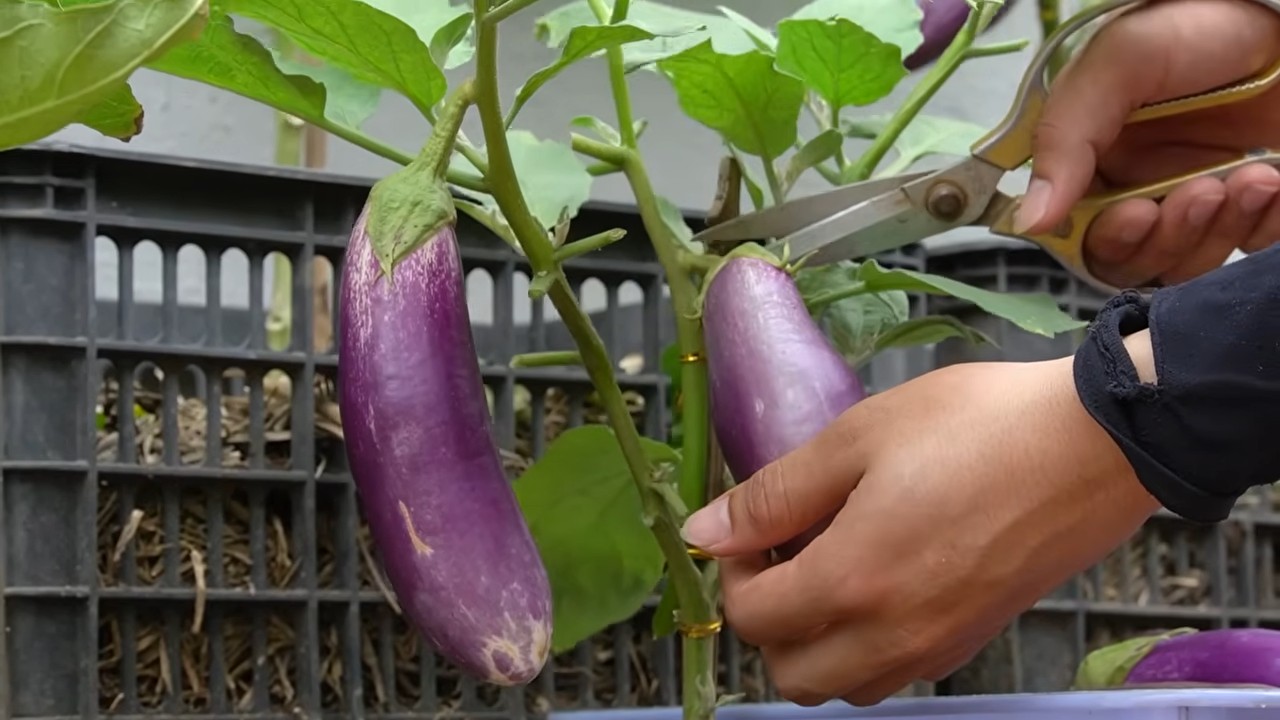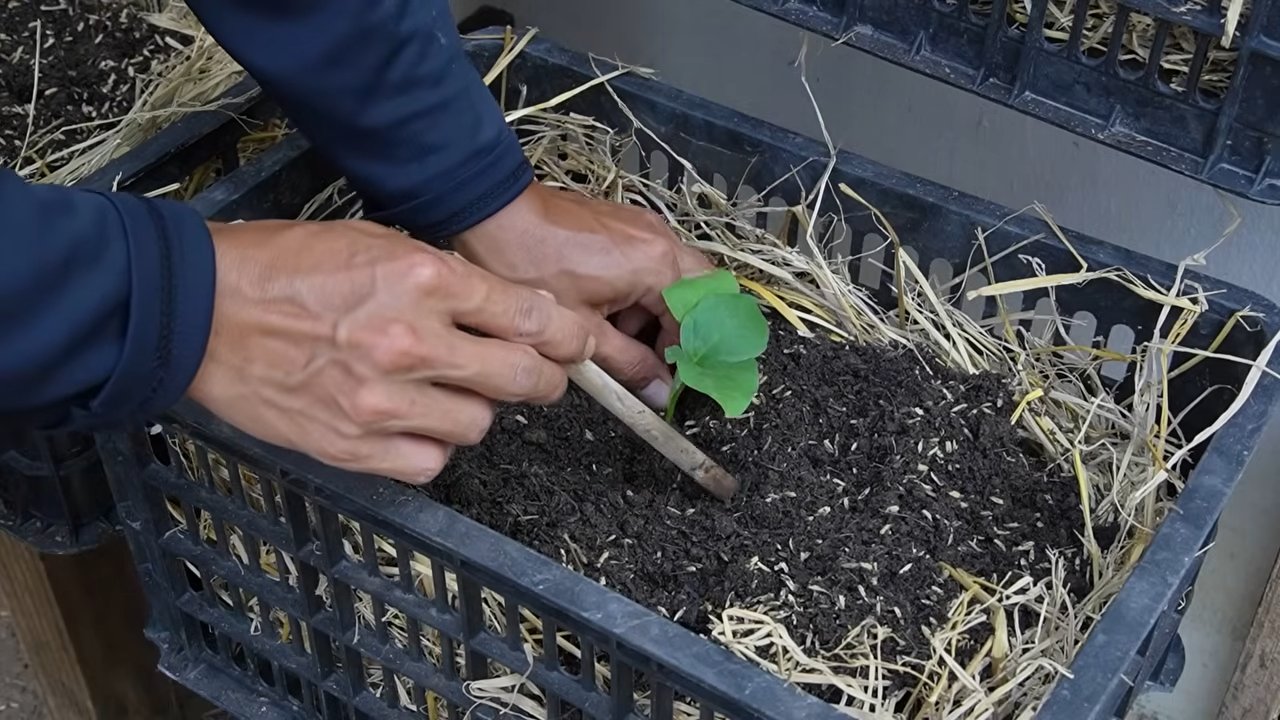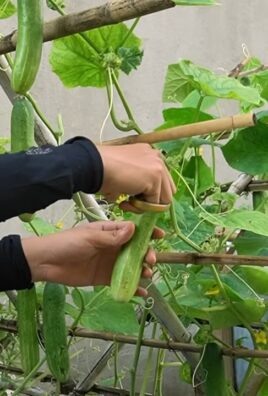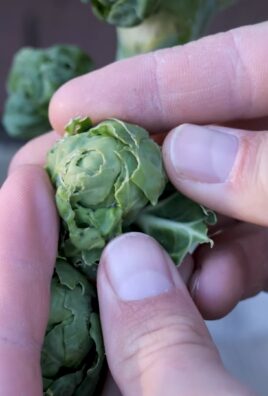Growing Eggplants: Imagine biting into a perfectly cooked eggplant, its creamy texture and subtly smoky flavor bursting in your mouth. Now, imagine that eggplant came straight from your own backyard! Sounds dreamy, right? Well, it doesn’t have to be just a dream. This simple guide will unlock the secrets to successfully growing eggplants, even if you’re a complete beginner.
Eggplants, with their glossy, deep purple skin (though they come in other colors too!), have a rich history, dating back thousands of years to ancient Asia. They were initially cultivated for medicinal purposes before becoming a culinary staple. Today, they’re a beloved ingredient in dishes around the world, from Italian eggplant parmesan to Middle Eastern baba ghanoush.
But why should you bother growing your own? Store-bought eggplants can sometimes be bland and lack the vibrant flavor of freshly picked produce. Plus, there’s something incredibly satisfying about nurturing a plant from seed to harvest. This DIY guide will provide you with easy-to-follow steps and insider tips to ensure a bountiful eggplant harvest. We’ll cover everything from choosing the right variety for your climate to protecting your plants from pests and diseases. Get ready to impress your friends and family with your homegrown eggplant creations!

Auberginen selbst anbauen: Dein umfassender DIY-Leitfaden
Hallo Gartenfreunde! Ich freue mich riesig, euch heute in die Welt des Auberginenanbaus einzuführen. Auberginen, auch Eierfrüchte genannt, sind nicht nur lecker, sondern auch eine wunderschöne Ergänzung für jeden Gemüsegarten. Mit diesem Leitfaden zeige ich euch, wie ihr Schritt für Schritt eure eigenen Auberginen erfolgreich anbauen könnt. Keine Angst, es ist einfacher als ihr denkt!
Vorbereitung ist alles: Die Grundlagen für den Auberginenanbau
Bevor wir loslegen, ist es wichtig, die Grundlagen zu verstehen. Auberginen sind wärmeliebende Pflanzen und brauchen viel Sonne. Hier sind die wichtigsten Punkte, die ihr beachten solltet:
* Standort: Wählt einen sonnigen Standort mit mindestens 6-8 Stunden direkter Sonneneinstrahlung pro Tag.
* Boden: Der Boden sollte gut durchlässig, locker und reich an organischen Stoffen sein. Ein leicht saurer pH-Wert (zwischen 6,0 und 6,8) ist ideal.
* Klima: Auberginen sind frostempfindlich. Beginnt mit der Anzucht im Haus, wenn die Temperaturen noch niedrig sind.
* Sortenwahl: Es gibt viele verschiedene Auberginensorten. Wählt eine Sorte, die für euer Klima und eure Platzverhältnisse geeignet ist. Beliebte Sorten sind ‘Black Beauty’, ‘Long Purple’ und ‘Ichiban’.
Auberginen vorziehen: Der Start im Haus
Da Auberginen eine lange Wachstumsperiode haben, ist es ratsam, sie im Haus vorzuziehen. So könnt ihr sicherstellen, dass sie rechtzeitig Früchte tragen.
1. Aussaat: Beginnt mit der Aussaat etwa 8-10 Wochen vor dem letzten erwarteten Frost. Füllt kleine Anzuchttöpfe oder eine Anzuchtschale mit Anzuchterde.
2. Samen säen: Legt die Auberginensamen etwa 0,5-1 cm tief in die Erde. Bedeckt sie leicht mit Erde und gießt sie vorsichtig an.
3. Feuchtigkeit: Haltet die Erde feucht, aber nicht nass. Eine Sprühflasche eignet sich gut, um die Erde gleichmäßig zu befeuchten.
4. Wärme: Auberginensamen keimen am besten bei einer Temperatur von 24-29°C. Eine Heizmatte kann helfen, die Temperatur konstant zu halten.
5. Licht: Sobald die Samen gekeimt sind, benötigen die Keimlinge viel Licht. Stellt sie an einen hellen Ort oder verwendet eine Pflanzenlampe.
6. Pikieren: Wenn die Keimlinge ihre ersten echten Blätter entwickelt haben (nicht die Keimblätter), könnt ihr sie in größere Töpfe pikieren. Achtet darauf, die Wurzeln nicht zu beschädigen.
Auspflanzen ins Freie: Der Umzug in den Garten
Sobald die Frostgefahr vorüber ist und die Bodentemperatur mindestens 15°C beträgt, können die Auberginen ins Freie gepflanzt werden.
1. Abhärten: Bevor ihr die Auberginen ins Freie pflanzt, solltet ihr sie abhärten. Stellt sie dazu für einige Tage tagsüber ins Freie und holt sie nachts wieder herein. So gewöhnen sie sich langsam an die Bedingungen im Garten.
2. Boden vorbereiten: Lockert den Boden gut auf und reichert ihn mit Kompost oder anderem organischen Material an.
3. Pflanzabstand: Pflanzt die Auberginen in einem Abstand von etwa 45-60 cm zueinander.
4. Pflanzen: Grabt ein Loch, das groß genug ist, um den Wurzelballen aufzunehmen. Setzt die Auberginen vorsichtig ein und füllt das Loch mit Erde auf. Drückt die Erde leicht an.
5. Gießen: Gießt die Auberginen nach dem Pflanzen gründlich an.
6. Mulchen: Mulcht den Boden um die Auberginen herum mit Stroh oder anderem organischen Material. Das hilft, die Feuchtigkeit im Boden zu halten und Unkraut zu unterdrücken.
Pflege der Auberginen: Gießen, Düngen und mehr
Auberginen brauchen regelmäßige Pflege, um gut zu wachsen und viele Früchte zu tragen.
1. Gießen: Gießt die Auberginen regelmäßig, besonders während trockener Perioden. Achtet darauf, dass der Boden nicht austrocknet. Gießt am besten am Morgen, damit die Blätter tagsüber abtrocknen können.
2. Düngen: Auberginen sind Starkzehrer und benötigen regelmäßige Düngung. Verwendet einen organischen Dünger oder einen speziellen Gemüsedünger. Düngt alle 2-3 Wochen.
3. Stützen: Auberginenpflanzen können unter dem Gewicht der Früchte umknicken. Stützt sie mit Stäben oder einem Rankgitter.
4. Ausgeizen: Entfernt regelmäßig Seitentriebe, um die Bildung von Früchten zu fördern. Lasst nur den Haupttrieb und einige wenige Seitentriebe stehen.
5. Schädlinge und Krankheiten: Achtet auf Schädlinge wie Blattläuse, Kartoffelkäfer und Spinnmilben. Bekämpft sie bei Bedarf mit natürlichen Mitteln wie Neemöl oder Schmierseifenlösung. Auberginen können auch von Pilzkrankheiten wie Mehltau befallen werden. Sorgt für eine gute Belüftung und entfernt befallene Blätter.
Erntezeit: Die Früchte deiner Arbeit genießen
Die Erntezeit für Auberginen hängt von der Sorte und den Wachstumsbedingungen ab. In der Regel können Auberginen etwa 60-80 Tage nach dem Auspflanzen geerntet werden.
1. Reife erkennen: Auberginen sind reif, wenn sie eine glänzende, tief gefärbte Haut haben und sich fest anfühlen. Die Frucht sollte sich leicht vom Stiel lösen lassen.
2. Ernten: Schneidet die Auberginen mit einem scharfen Messer oder einer Gartenschere vom Stiel ab. Lasst einen kleinen Stielansatz an der Frucht.
3. Lagerung: Auberginen sind nicht lange haltbar. Lagert sie im Kühlschrank und verbraucht sie innerhalb von wenigen Tagen.
Zusätzliche Tipps für den Auberginenanbau
* Fruchtfolge: Baut Auberginen nicht jedes Jahr am selben Standort an. Wechselt die Anbaufläche, um Krankheiten und Schädlingen vorzubeugen.
* Begleitpflanzen: Pflanzt Basilikum, Ringelblumen oder Tagetes in der Nähe der Auberginen. Diese Pflanzen helfen, Schädlinge abzuhalten.
* Bestäubung: Auberginen sind selbstbestäubend, aber Insekten wie Bienen können die Bestäubung verbessern. Lockt Insekten in euren Garten, indem ihr blühende Pflanzen anbaut.
* Überwinterung: In milden Klimazonen können Auberginen überwintert werden. Schneidet die Pflanzen im Herbst zurück und deckt sie mit Stroh oder Laub ab.
Häufige Probleme und Lösungen
* Blütenfall: Wenn Auberginen ihre Blüten abwerfen, kann das verschiedene Ursachen haben. Mögliche Gründe sind zu hohe oder zu niedrige Temperaturen, Wassermangel, Nährstoffmangel oder schlechte Bestäubung.
* Kleine Früchte: Wenn Auberginen nur kleine Früchte bilden, kann das an Nährstoffmangel oder Wassermangel liegen. Düngt und gießt die Pflanzen regelmäßig.
* Verkrüppelte Blätter: Verkrüppelte Blätter können auf einen Schädlingsbefall oder eine Krankheit hindeuten. Untersucht die Pflanzen sorgfältig und bekämpft Schädlinge oder Krankheiten bei Bedarf.
Sortenempfehlungen für Anfänger
* Black Beauty: Eine klassische Sorte mit großen, dunkelvioletten Früchten. Sie ist robust und einfach anzubauen.
* Long Purple: Eine Sorte mit langen, schlanken, violetten Früchten. Sie ist sehr ertragreich und hat einen milden Geschmack.
* Ichiban: Eine japanische Sorte mit langen, schlanken, glänzenden Früchten. Sie ist frühreif und eignet sich gut für den Anbau in kühleren Klimaz

Conclusion
So, there you have it! Growing eggplants doesn’t have to be an intimidating endeavor reserved for seasoned gardeners. With a little patience, the right knowledge, and this simple guide, you can cultivate your own thriving eggplant patch and enjoy the unparalleled satisfaction of harvesting fresh, flavorful eggplants straight from your backyard.
This guide isn’t just about providing basic instructions; it’s about empowering you to take control of your food source and connect with nature in a meaningful way. Imagine the delicious meals you can create with your homegrown eggplants – from classic eggplant parmesan and creamy baba ghanoush to spicy stir-fries and hearty vegetable curries. The possibilities are truly endless!
Why is this DIY approach a must-try? Because it offers a level of control and customization that you simply can’t achieve with store-bought produce. You get to choose the variety of eggplant that best suits your taste and climate, ensuring a harvest of perfectly ripe, flavorful fruits. Plus, you can avoid the pesticides and herbicides often used in commercial farming, knowing that you’re providing your family with healthy, organically grown food.
Looking for variations? Consider companion planting to enhance your eggplant’s growth and deter pests. Marigolds, basil, and thyme are excellent choices. You can also experiment with different growing methods, such as container gardening or raised beds, depending on your space and resources. For those in cooler climates, starting your eggplant seeds indoors several weeks before the last frost is crucial for a successful harvest. And don’t forget the importance of proper staking or caging to support the heavy fruits as they develop.
We encourage you to embrace the challenge and embark on your own eggplant-growing adventure. Don’t be afraid to experiment, learn from your mistakes, and adapt your approach as needed. The rewards of growing your own food are immeasurable, and we’re confident that you’ll find the experience both fulfilling and delicious.
Now, it’s your turn! Grab your seeds, prepare your soil, and get ready to witness the magic of growing eggplants firsthand. We’d love to hear about your experiences, so please share your tips, successes, and challenges in the comments below. Let’s build a community of eggplant enthusiasts and inspire others to join the fun! Happy gardening!
Frequently Asked Questions (FAQ)
Q: What is the best time to start growing eggplants?
A: The timing depends on your climate. In warmer regions with long growing seasons, you can start seeds directly outdoors after the last frost. However, in cooler climates, it’s best to start seeds indoors 6-8 weeks before the last expected frost. This gives the seedlings a head start and ensures a longer growing season. Transplant them outdoors once the soil has warmed up and the risk of frost has passed.
Q: What kind of soil is best for growing eggplants?
A: Eggplants thrive in well-drained, fertile soil that is rich in organic matter. The ideal soil pH is between 6.0 and 7.0. Amend your soil with compost or well-rotted manure before planting to improve its fertility and drainage. Avoid heavy clay soils, as they can become waterlogged and hinder root growth.
Q: How much sunlight do eggplants need?
A: Eggplants are sun-loving plants and require at least 6-8 hours of direct sunlight per day to produce a bountiful harvest. Choose a planting location that receives ample sunlight throughout the day. If you’re growing eggplants in containers, make sure to place them in a sunny spot.
Q: How often should I water my eggplants?
A: Eggplants need consistent moisture, especially during hot weather. Water deeply and regularly, aiming to keep the soil consistently moist but not waterlogged. Check the soil moisture regularly by sticking your finger into the soil. If the top inch feels dry, it’s time to water. Avoid overhead watering, as it can promote fungal diseases. Drip irrigation or soaker hoses are excellent options for delivering water directly to the roots.
Q: What are some common pests and diseases that affect eggplants?
A: Common pests that can affect eggplants include aphids, flea beetles, spider mites, and tomato hornworms. Diseases include verticillium wilt, fusarium wilt, and early blight. Regularly inspect your plants for signs of pests or diseases. Use organic pest control methods, such as insecticidal soap or neem oil, to control pests. Ensure good air circulation around your plants to prevent fungal diseases. Crop rotation can also help to reduce the risk of soilborne diseases.
Q: How do I know when my eggplants are ripe?
A: Eggplants are typically ready to harvest when they are firm, glossy, and have reached their mature size and color. The skin should be smooth and unblemished. Gently press the skin with your thumb; if it leaves a slight indentation, the eggplant is ripe. Overripe eggplants will become dull, soft, and bitter. Use a sharp knife or pruning shears to cut the eggplant from the plant, leaving a short stem attached.
Q: Can I grow eggplants in containers?
A: Yes, eggplants can be successfully grown in containers, especially if you have limited garden space. Choose a large container that is at least 12-18 inches in diameter and depth. Use a high-quality potting mix that is well-draining. Make sure the container has drainage holes to prevent waterlogging. Water regularly and fertilize every 2-3 weeks with a balanced fertilizer.
Q: What are some good companion plants for eggplants?
A: Companion planting can help to improve eggplant growth and deter pests. Good companion plants for eggplants include basil, thyme, marigolds, peppers, and beans. Basil repels aphids and other pests, while marigolds attract beneficial insects that prey on pests. Peppers and beans can help to improve soil fertility. Avoid planting eggplants near fennel, as it can inhibit their growth.
Q: How do I prevent blossom-end rot in eggplants?
A: Blossom-end rot is a common problem in eggplants, caused by a calcium deficiency. To prevent blossom-end rot, ensure that your soil has adequate calcium levels. Amend your soil with lime or bone meal before planting. Water consistently to maintain even soil moisture, as fluctuations in moisture can interfere with calcium uptake. Avoid over-fertilizing with nitrogen, as it can also contribute to blossom-end rot.
Q: Can I save seeds from my eggplants?
A: Yes, you can save seeds from your eggplants, but keep in mind that hybrid varieties may not produce true-to-type offspring. To save seeds, allow the eggplant to fully ripen on the plant until it becomes soft and dull. Cut the eggplant open and scoop out the seeds. Rinse the seeds thoroughly to remove any pulp. Spread the seeds out on a paper towel to dry completely. Store the dried seeds in an airtight container in a cool, dark place.




Leave a Comment